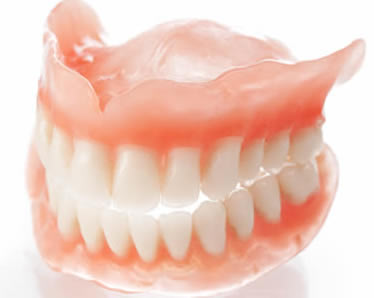
by Dr. Adkins | Feb 19, 2018 | Blog, Dental Topics 1, Root Canal Treatment
Millions of root canal treatments are performed every year, and it is an effective and safe way to save a damaged tooth. Unlike its reputation over the years, modern dentistry allows this procedure to be practically painless and to provide relief from symptoms right away.
Anatomy
The first thing to understand is the anatomy of the tooth. Under the hard enamel on the outside of the tooth and the dentin below that, the interior of a tooth contains pulp. It houses the nerves, blood vessels, and connective tissues that all nourish the tooth. This allows it to grow properly and contributes to good oral health. After the tooth is fully developed, the tooth can get its nourishment from surrounding tissues and the pulp is not as necessary.
Necessity
The pulp can become infected, inflamed, or damaged by problems like decay, injury, repeated dental procedures, or a bad crown. If the damaged pulp is not treated, an abscess can develop or severe pain can result. Often, root canal treatment is the only way to save the tooth instead of having to extract it. Dentists advise that saving a tooth is almost always a better option, providing the most natural appearance, efficient function, and protection of oral health.
Procedure
Many patients report that root canal treatment is not much different for them than having a regular filling done. X-rays are taken and a local anesthetic is administered. Once numb, a dental dam is placed to protect the area during the procedure. Then the pulp is removed, the area is thoroughly cleaned, and then it is filled with special material for this purpose. The tooth is sealed for protection, and finally a crown is placed on top to protect the tooth. Most patients are able to return to normal activities immediately following treatment, and the procedure is permanent in most cases.
If you need a root canal dentist in McDonough, contact our office today.

by Dr. Adkins | Feb 12, 2018 | Blog, Dental Topics 1, Teeth Whitening
Having a bright, beautiful, white smile is something we all desire. It signals health and prosperity and leaves the best possible first impression a person can make. There are a host of products at the drug store that label themselves “whitening.” Whitening toothpastes, whitening mouth rinses, whitening strips, gels and creams all line the shelves, promising a “new you!” Your dentist, however, offers something labeled as “bleaching.” So what’s the difference? Which should you choose?
Your natural tooth is made up of two specific layers: enamel and dentin. The enamel layer is on the outside of the tooth. It’s the white part we see when someone smiles. It’s hard and heavily mineralized and can appear like porcelain. The dentin is the inner layer. It’s yellow in color and supports the enamel on the outside. Over time, your enamel naturally wears away and the yellow dentin color can begin to show through.
The term “whitening” is applied to any product that helps restore teeth to a natural color by removing debris and stains from a natural tooth’s surface. Any substance that restores the surface of a tooth’s enamel is a whitening product. Many whitening products contain a mild abrasive that removes leftover discoloration and food particles, leaving the enamel of the tooth smooth and white. Teeth whitening products combat stains caused by ageing and the discoloration left by many foods, or by smoking.
The FDA permits the term “bleaching” only for products that can whiten a tooth beyond their initial, natural color. Bleaching products contain active ingredients such as carbamide peroxide or hydrogen peroxide. The peroxide is activated so that it releases oxygen molecules that enter the tooth enamel and break down stains in a way that whitening products cannot. This activation can occur immediately, in the case of some in-office bleaching products, like laser whitening, or it can take several hours, as it can with custom take-home bleaching trays.
If you are considering brightening your smile, talk to McDonough teeth whitening dentist Dr. Adkins to see what product is best suited to your smile needs!
We treat patients from McDonough and the surrounding area

by Dr. Adkins | Feb 5, 2018 | Blog, Dental Topics 1, Dentures
An estimated 50 million Americans have lost all their teeth, and 69 percent of adults are missing at least one tooth. Without a full set of teeth, you may deal with alignment problems, dietary restrictions, and self-esteem issues. With modern dentures, your dentist can renew your appearance and improve oral health.
Dentures are prosthetic appliances created to replace missing teeth. Full dentures are rows of false teeth that cover the upper, lower, or both arches. If you still have some of your natural teeth, your dentist may suggest a partial denture, which fits into the empty space in your smile like a puzzle piece.
How do dentures feel?
At first, your prosthesis may take some getting used to, so give your mouth time to adjust. You may have some difficulty with pronunciation, but that will pass.
Will my dentures need to be replaced?
As we age, our mouth tissues change. Over time, your dentures may need to be repositioned, realigned, or entirely remade. Never make changes to your appliance; contact your dentist if something doesn’t seem right.
How do I care for my dentures?
To protect your dental appliance, handle the denture with care. When you take the device out, always store it safely in its case. Gently clean your dentures with mild soap and water to remove bacteria. Make sure to put the denture out of reach from small children or pets.
Do I still need to brush if I have dentures?
Absolutely. Your gums still need proper oral care, so brush them twice daily to keep the tissue healthy.
We offer dentures at our McDonough dental office

by Dr. Adkins | Jan 29, 2018 | Blog, Cosmetic Dentistry, Dental Topics 1
Do you find yourself hiding your mouth behind your hand as you smile or laugh? Do you avoid smiling or laughing broadly so you are able to hide your teeth? Do you dread speaking in public, going out, or eating in public because you have concerns about the appearance of your teeth?
If this sounds familiar, you should talk to a cosmetic dentist right away. Cosmetic dentistry is the name for any type of dental work that improves the patient’s aesthetic appearance. It includes bonding, dental crowns, dental bridges, tooth implants, porcelain or resin veneers, gum grafts, and/or the removal of the gum tissue or tooth structure. Braces are also considered a cosmetic dental procedure, as is tooth whitening or bleaching.
Chipped, misaligned, or unattractive teeth can lead you to be self-conscious about your appearance. Missing teeth can affect you professionally and personally, and over time, can cause the shape of your face to change as the surrounding teeth begin to shift, making you look older than you actually are.
Do you feel as though you are being held back, unable to reach your goals socially or in business, because of concerns about your teeth? Do you feel isolated because you are embarrassed or ashamed to connect with others because of the condition of your teeth or gums? Don’t let your dental concerns hold you back. Talking with your cosmetic dentist can be the first step toward living the full life you desire.
Life events such as weddings, reunions, or homecomings can be cause for beginning a cosmetic dentistry journey. Events such as job interviews, first dates, or preparing for an important photograph are all good reasons for sprucing up your smile. Your smile goals can be large or small, and may take one visit or more.
Your cosmetic dentist in McDonough has the training, knowledge, and expertise to make the best possible plan for you. A cosmetic dentist can address anything impeding you from achieving your healthiest, best smile and from being your most attractive, most confident self.
We look forward to seeing you in our McDonough dental office






 (470) 665-5292
(470) 665-5292  E-Mail Us
E-Mail Us 
